The following is a sneak preview from "Fun With Umlauts," an upcoming book...
✤ ✪ ✤ ✪ ✤ ✪ ✤ ✪ ✤ ✪ ✤ ✪ ✤ ✪ ✤ ✪ ✤ ✪ ✤
.jpg)
Großer Genuss mit Ümlauten, für Spaß & Gewinn Fun With Ümlauts, by Robbie Walters, with J. B. Weld Illustrated by P. J. Bottoms Published by Daily Eagle News DAILYEAGLE.NEWS
✤ ✪ ✤ ✪ ✤ ✪ ✤ ✪ ✤ ✪ ✤ ✪ ✤ ✪ ✤ ✪ ✤ ✪ ✤
Dedicated to “Professor” Michael H. Wofsey, Ph. D.
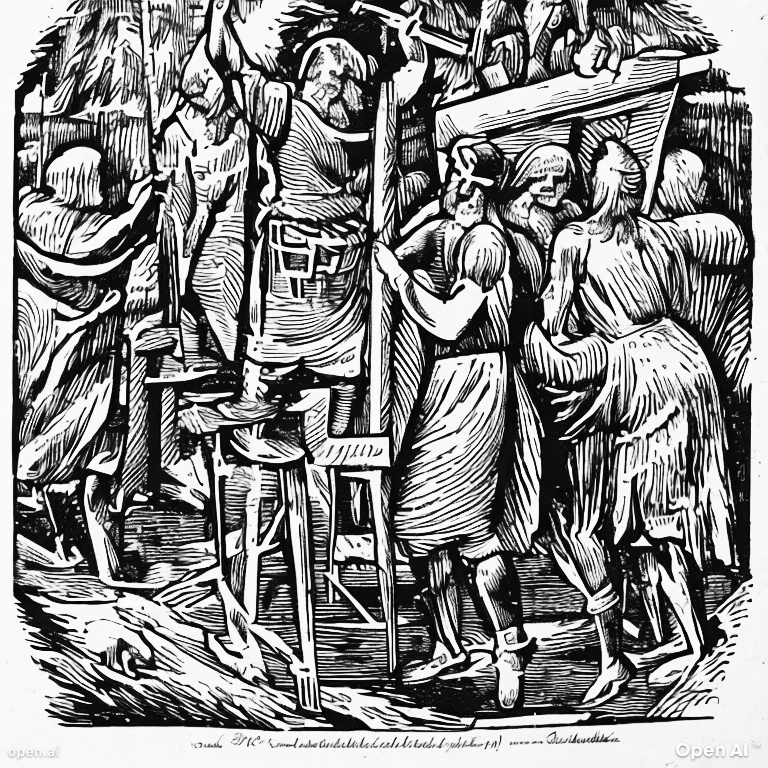
✤ ✪ ✤ ✪ ✤ ✪ ✤ ✪ ✤ ✪ ✤ ✪ ✤ ✪ ✤ ✪ ✤ ✪ ✤
❦ Table of Contents ❦
Preface A superfluous long-winded warm-up needlessly preceding this exploration of the ümlaut, detailing our journey which we're about to embark upon; inviting the reader to share in curious fascination with language, history, and culture.
Forward A comprehensive overview of the significance of the ümlaut in the milieu of sentient communication and tradition, offering a glimpse into the depth and richness of the narrative soon unfold within the subsequent sections.
Introduction An in-depth exploration of the central theme of the book, providing an analytical framework for the narrative and setting the stage for the chapters to come.
Chapter One: Ancient Origins An epic journey tracing the roots of the ümlaut from ancient Germanic dialects to modern scripts. Poems and essays in this chapter paint a vivid picture of the ümlaut's history and evolution.
Chapter Two: The Ümlaut in Art and Media An examination of the ümlaut's transformation into a cultural icon in literature, music, visual arts, and media. Multiple iterations of epic verses and essays delve into the ümlaut's influence as a symbol of artistic expression and interpretation.
Chapter Three: Ümlauts in Technology A deep-dive into the ümlaut's adaptation to the digital world, from its integration with coding languages, to its role in digital communication. Detailed essays and rhyming couplets explore this fascinating journey.
Chapter Four: Ümlauts in Other Languages An exploration of the ümlaut's presence and influence in languages across the globe, underscoring its universal appeal and versatile influence upon phonetic and grammatical nuances.
Chapter Five: Ümlauts in the Wild A sojourn into the natural habitat of the ümlaut – our everyday world. Odes sandwiched between essays capture the ümlaut's omnipresence from corporate logos to scholarly papers, and social media exchanges to scripts on silver screens.
Chapter Six: The Heavy Metal Ümlaut An exploration of the ümlaut's special significance in the realm of heavy metal music. Through the medium of semantics and song, we plumb fathomless unknown motives as to why this diacritic has become a symbol of rebellion and renegade artistic expression.
Chapter Seven: How Ümlauts Change the Sound of Vowels A detailed exploration of the phonetic experience of the ümlaut, explaining how it influences vowel sounds and adds richness to spoken language.
Chapter Eight: How to Type Ümlauts on Different Keyboards A practical guide to the modern-day usage of the ümlaut, with detailed instructions for typing the ümlaut across various keyboard layouts.
Epilogue: The Future of the Ümlaut A speculative look at what the future might hold for the ümlaut, exploring potential adaptations and shifts in usage in our rapidly changing world.
Afterword A concise reflective retrospective of our shared journey through the pages of the book, and what the reader might take away from this detailed examination of the elusive ümlaut.
Each chapter, introduction, forward, preface, epilogue, and afterword in this collection is accompanied by painstaking extensive research, providing in-depth scrutiny and analysis. The work is further enriched by beautifully crafted epic rhyming stanzas, adding an artistic flair to your most humble servant’s academic treatise.
✤ ✪ ✤ ✪ ✤ ✪ ✤ ✪ ✤ ✪ ✤ ✪ ✤ ✪ ✤ ✪ ✤ ✪ ✤
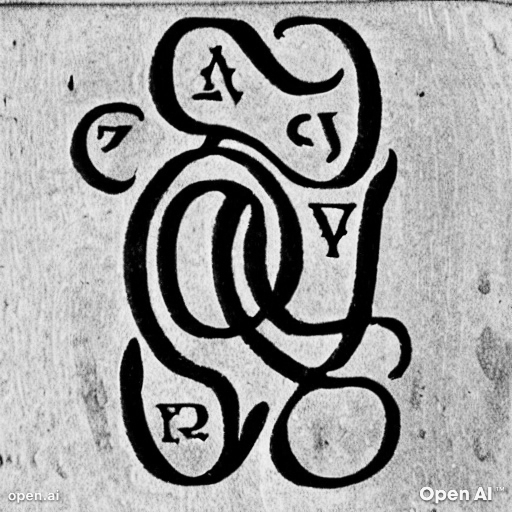
❧ Preface
Beloved reader, we present to you this preface as a guide to the shared odyssey that we are about to embark upon—an exploration of the ümlaut, a seemingly insignificant diacritic that, upon closer examination, opens up a portal into a breathtaking world of history, culture, language, art, and technology. Our narrative is an ode to the undying human spirit of curiosity and a testimony to the rich tapestry of knowledge that lies within the folds of every symbol and sound of human language.
Our protagonist – the ümlaut – is a two-dotted diacritic born amidst the clamour and strife of ancient Germanic tribes, nurtured by the wisdom of Middle Age scholars, and continually adapted by the dynamism of the modern world. Its life's journey, traced in the annals of our book, is a narrative that interweaves multiple strands of human history, language, culture, and technology.
The first chapter, 'Ancient Origins', is an excavation of the roots of the ümlaut, tracing its lineage from the ancient Germanic dialects to the scripts of our modern world. Our exploration reveals the fascinating evolution of language – how it breathes, grows, and adapts, guided by the collective consciousness of human society.
In the subsequent chapter, 'The ümlaut in Art and Media,' we unmask the ümlaut's transformation into a cultural icon. The ümlaut's resonance in the realms of literature, music, visual arts, and media highlights its influence as a symbol of artistic expression and interpretation. This chapter portrays the ümlaut as an artist's tool, a symbol that carries with it the weight of nuanced meanings and creative intentions.
Chapter Three, 'ümlauts in Technology', presents a captivating narrative of the ümlaut's journey from parchment to screen, from handwritten manuscripts to lines of complex codes. The ümlaut, resilient and adaptable, has carved a niche for itself in the digital world, integrating with the syntax of coding languages and the fabric of digital communication.
Our narrative then sweeps across borders in Chapter Four, 'ümlauts in Other Languages'. We explore the ümlaut's presence and role in languages around the globe, underscoring its universal appeal and versatile influence on phonetic and grammatical nuances.
In Chapter Five, 'ümlauts in the Wild', we encounter the ümlaut in its natural habitat—the world around us. From the corporate logos that dot our cityscapes to the scholarly papers that fill our libraries, from the fleeting exchanges on social media platforms to the scripts that scroll across our screens, the ümlaut is an enduring testament to the enduring power of language in shaping our reality.
The subsequent chapters—'The Heavy Metal ümlaut', 'How ümlauts Change the Sound of Vowels', and 'How to Type ümlauts on Different Keyboards'—invite the reader to delve deeper into the intricacies of the ümlaut's role in music, phonetics, and technology. These chapters, each a specialised exploration of a facet of the ümlaut, further enhance our appreciation of its pervasive influence and diverse applications.
Our narrative culminates with the epilogue, 'The Future of the ümlaut', followed by an afterward that invites the reader to reflect upon their journey through the pages of this book. As co-authors, we hope that our narrative provides not only an insight into the world of the ümlaut but also kindles a spark of curiosity, a desire to explore the myriad wonders that lie within the realm of language and communication.
As you delve into the chapters of our book, dear reader, we invite you to partake in our shared fascination and awe for the intricate beauty of language, the richness of culture, and the vast tapestry of human history. May our journey into the world of the ümlaut inspire a deeper appreciation of the delicate balance between sound and symbol, between culture and communication, between past and future.
Thus, we commence our odyssey into the world of the ümlaut, carrying with us the excitement of discovery and the promise of knowledge. Here's to our shared journey. Here's to the ümlaut!
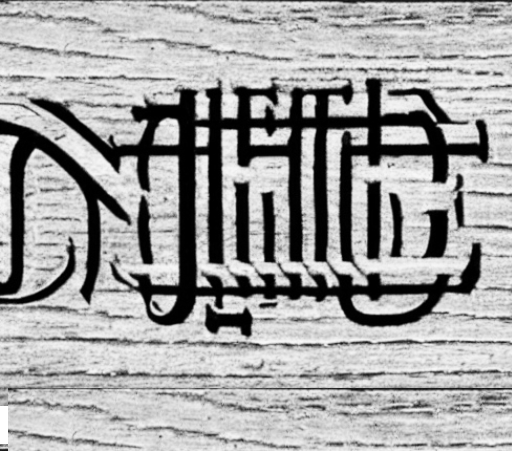
❧ Foreword
Honoured reader, as you stand on the precipice of this book's chapters, allow us to guide you into our shared exploration that unveils the journey of an unusual foreign phonetic friend – the ümlaut. This handbook contains much more than a mere collection of facts and observations; it is a vivid tapestry woven with threads of history, culture, art, and technology. In this forward, we aim to illuminate the path that lies ahead in our shared journey through the pages of this book.
The ümlaut – a modest diacritic comprising two dots placed above a letter – may seem a strange subject for such extensive exploration. Yet, the story of these two tiny marks is a mirror that reflects the sweeping panorama of human history, culture, and language. In its footsteps from the aboriginal dialects of ancient Germanic clans, to the cutting-edge codexes of the gigabyte age, the ümlaut embodies rapid evolution of modern telecommunication, shifts in popular cultural expressions, and the incredible capacity for adaptation and evolution which characterizes human civilization.
Our narrative commences with Chapter One, 'Ancient Origins', where we trace the roots of the ümlaut back to its earliest inception. The ümlaut's journey begins amidst the guttural murmurs of primitive pagan savage Germanic chieftains, weaving its way through the manuscripts of chaste Middle Age scholars, and enduring through the ravages of time, to emerge inside our modern scripts & ASCII keyboard ligature codes. The ümlaut's story is a testament to the dynamic, evolving nature of language – a reality that proves itself equally seductive, as it is instructive.
In the subsequent chapter, 'The ümlaut in Art and Media,' we turn our attention to the ümlaut's role as a cultural emblem. The humble ümlaut has transcended boundaries of language to become a symbol in the arts, subtly shaping our shared cultural narrative. From the hallowed verses of literature to the pulsating rhythm of music, from the vivid strokes of visual arts to the dynamic realms of media and entertainment, the ümlaut stands as an emblem of artistic expression, a symbol laden with nuanced meanings and interpretations.
Chapter Three, 'ümlauts in Technology', presents an intriguing transition in the ümlaut's journey – from the parchment to the screen, from the quill to the keyboard. This chapter underscores the ümlaut's inherent adaptability, as it finds its place within the complex syntax of coding languages and the fast-paced realm of digital telecom. As we navigate through the bits and bytes of this section, the ümlaut emerges not merely as a symbol, but as a bridge between the age-old human instinct for speech and the rapid advances of technology.
In 'ümlauts in Other Languages', Chapter Four, we move beyond the Germanic linguistic landscape to explore the ümlaut's global impression. This chapter illustrates the ümlaut's universal appeal and its versatile role in enhancing the phonetic and grammatical tweaks of foreign tongues across the planet.
'ümlauts in the Wild', Chapter Five, takes us on a journey through the ümlaut's ubiquitous presence in everyday life. Whether in the branding strategies of corporate behemoths, the academic rigour of scholarly papers, or the casual exchanges of social media, the ümlaut's presence is a constant reminder of the pervasive and profound influence languages wield in shaping our collective reality.
The following chapters, 'The Heavy Metal ümlaut', 'How ümlauts Change the Sound of Vowels', and 'How to Type ümlauts on Different Keyboards', offer up-close glimpses into the ümlaut's diverse facets. We delve into its symbolic significance in the universe of heavy metal music, its phonetic implications in vowel sounds, and its representation in the realm of keyboard layouts. These chapters underscore the ümlaut's gravity and versatility, even in the most unexpected corners of conscious experience.
As we traverse this winding road, dear reader, we invite you to share in our sense of wonder and intrigue. This book is a testimony to the boundless potential of human inquiry, to our shared obsession with the infinite pulchritudes of language, and to the indomitable spirit of invention which propels humanity hurtling toward unchartered territories of knowledge.
Welcome, then, to the world of the ümlaut – where two small dots make a world of difference. As we embark on this exploration together, we hope that the pages which follow inspire a deeper appreciation for the intricate beauty of language, the nuances of culture, and the profound influence of history. Here's to the journey that lies ahead!
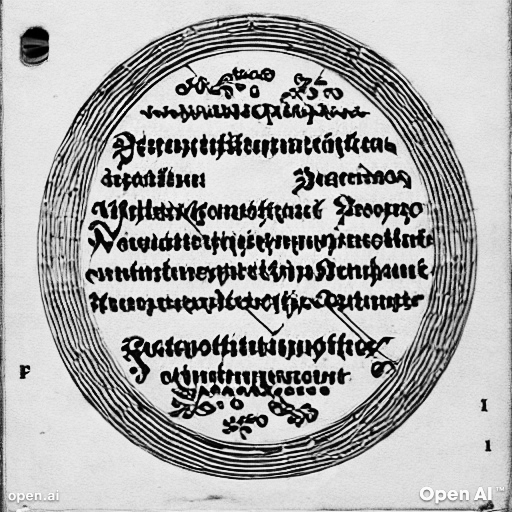
❧ Introduction, by co-author J. B. Weld
Welcome, dear reader, to our mutual voyage, a compelling journey that traverses the annals of time and the grand tapestry of human culture, centered around an artifact most humble yet undeniably influential – the ümlaut. With two small dots, it has changed the landscape of language, impacted the realm of arts, and left its indelible mark upon the surge of technology. This book, our shared enterprise, is an homage to this incredible diacritic, a character with a chronicle of its own. We invite you, our dear readers, to partake in this adventure through the ümlaut's lineage, usage, influence, and beyond.
Across the ensuing pages, we shall plunge deep into the heart of the ümlaut, an unassuming symbol that has, over the millennia, risen from the depths of tribal phonetics to the pinnacle of digital coding. The narrative is one of adaptation, resilience, and evolution, a testimony to the dynamic nature of human expression and communication. The tale of the ümlaut, dear reader, is not merely an exploration of a diacritic's history. Rather, it is a reflective journey that mirrors our own intellectual and cultural progress.
Within the sanctum of Chapter One, 'Ancient Origins,' we uncover the roots of the ümlaut in the gruntings of Germanic tribes, tracing its path from the spoken word to the written parchment. We chart its evolution through the Middle Ages and its adoption by the scriptoria of monastic scholars, a testament to the ever-evolving nature of human punctuation.
In the second chapter, 'The Ümlaut in Art and Media,' we turn our gaze to the diacritic's influence upon the sphere of arts. From literature to music, from painting to digital art, the ümlaut has permeated the fabric of artistic expression, infusing it with an added layer of depth and nuance. The ümlaut, as we shall see, is not merely a linguistic tool, but a medium of expression and a conduit of creativity.
As we progress to 'Ümlauts in Technology' in Chapter Three, we shine the light on the diacritic's remarkable transition from the printed page to the computer flatscreen. captured in cobwebs of coding, programming, and binary digits, the ümlaut found a new home, continuing its legacy of transformation and improvisation. This chapter, dear reader, delivers testimony to the convergence of language and technology and the ümlaut's integral role in this tale.
Chapter Four, 'Ümlauts in Other Languages,' expands the ümlaut's influence beyond its Germanic homeland to the tongues of diverse nations. We explore its usage in languages far and wide, underscoring the universal appeal of two little diacritic titles, and their ability to shape the phonetic and grammatical structures of various vowels.
In Chapter Five, 'Ümlauts in the Wild,' we move beyond the worlds of mere literature, art, and technology to observe the ümlaut in everyday life. From street signs to brand names, from academic papers to social media posts, the ümlaut has seamlessly integrated into our daily interactions, ever indicating the pervasive and powerful influence of phonics upon ordinary lives.
The subsequent chapters, 'The Heavy Metal Ümlaut,' 'How ümlauts Change the Sound of Vowels,' and 'How to Type ümlauts on Different Keyboards,' offer further explorations of the ümlaut's impact upon various aspects of society. These aspects are interwoven with original insights, fascinating anecdotes, and compelling examples which clarify the saga of the almighty ümlaut, our hero.
As we reach the epilogue and afterward, we pause to reflect upon the journey traversed and anticipate the road ahead. The tale of the ümlaut, albeit chronicled within the confines of this book, is not finite. It continues to mutate and adapt, shaping and being shaped by the ever-changing landscape of human expression. Huzzah!
Our hope, dear reader, is that this examination of the ümlaut's story illuminates not merely its history and influence, but also the broader narrative of language and communication, of human creativity and intellect. As you turn these pages, may you find not only knowledge but also inspiration, an affirmation to the enduring power and influence of language. Welcome, then, to this voyage through the annals of the ümlaut – a tale of two dots that have left an indelible mark upon the canvas of human culture.
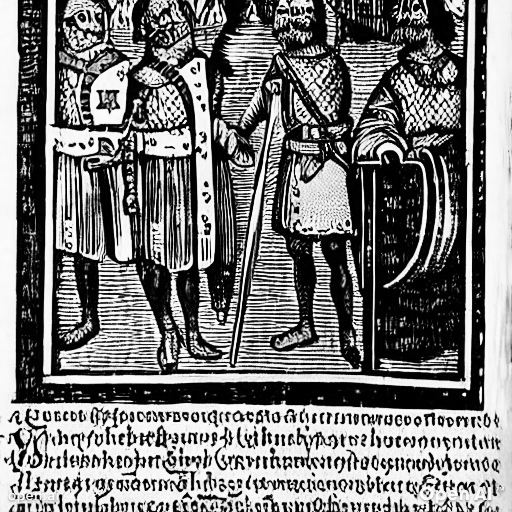
❦ ~ Sir Umlaut's Linguistic Odyssey: A Journey Through the Alphabet's Tapestry ~ ❦
In a land far removed, upon parchment pure, There dwelt a Umlaut, of charm sure. Two dots above a letter his form, In the silent night or daylight warm.
Sir Umlaut was his name most sweet, Round and plump and never discreet. From the realm of Diacritics, he hailed, In the kingdom of Letters, his fame trailed.
With a heart full of mirth and ink-dark eyes, His dream was to win the ultimate prize, To travel through texts of time and space, In each alphabet to find his place.
One fine morning, in the springtide bloom, Sir Umlaut declared, shaking off gloom, "I'll travel the world, both near and far, From the oldest scroll to the newest memoir."
First to the land of English, he took flight, Where his kind was a rare sight. In naïve and coördinate, he danced, The beauty of diversity he enhanced.
Then he sailed to the land of German, Among its words, he was a vermin. In fräulein and schön, he came alive, His spirit in the language began to thrive.
To the realm of Turkish, he journeyed next, Its unusual rules left him vexed. On soft "g" he was assigned to sit, A job he did with grace and wit.
In the world of Finnish, he found glee, A strange place with double vowels free, With ä and ö, he found his home, Yet his heart yearned further to roam.
Through words and sentences, he pranced, In the world of text, he advanced, From poetry to prose, and ancient scripts, Across every page, Sir Umlaut trips.
Through his travels, Sir Umlaut found, A place in every language, profound. Each adventure new lessons brought, And acceptance of diversity, he sought.
He returned to the realm of Diacritics, a sage, Wiser from his linguistic pilgrimage. His tale whispered in every font and type, Of a world united, devoid of hype.
In the style of old Chaucer's verse, Sir Umlaut's tale, we thus converse. An adventurous umlaut, bold and bright, Forever wandering, a gallant knight.
✤ ✪ ✤ ✪ ✤ ✪ ✤ ✪ ✤ ✪ ✤ ✪ ✤ ✪ ✤ ✪ ✤ ✪ ✤

Le livre "Le Mystère de l'Umlaut: Un Voyage à travers l'Histoire Linguistique" offre une exploration érudite et fascinante de la petite marque diacritique, l'umlaut. C'est un mélange admirable de rigueur académique, d'ingéniosité poétique et de narration engageante.
Dès le début, l'introduction, la préface et le prologue posent une question intrigante: comment une petite marque a-t-elle pu avoir une telle influence linguistique et culturelle? Les auteurs, A.I. et J.B. Weld, relèvent brillamment le défi de répondre à cette question de manière approfondie.
Chaque chapitre de ce travail aborde un aspect différent de l'umlaut, offrant à la fois une exploration historique et une analyse contemporaine. La combinaison de l'écriture en prose et en vers crée une dynamique unique qui maintient l'intérêt du lecteur tout au long du livre.
Les points forts du livre résident sans doute dans sa recherche approfondie et sa présentation détaillée. Les auteurs font preuve d'un engagement impressionnant envers l'exactitude historique et l'équilibre académique. Cependant, parfois le lecteur peut se sentir dépassé par la quantité d'informations présentées, ce qui peut rendre certains passages difficiles à suivre.
Par ailleurs, l'utilisation de l'archaïsme et de l'obscurité lexicale, bien qu'efficace pour créer une atmosphère unique, peut parfois prêter à confusion. Il est parfois nécessaire de lire certains passages plusieurs fois pour en saisir le sens. Cela dit, le choix stylistique audacieux de l'écriture peut aussi être vu comme une invitation à plonger plus profondément dans le sujet.
Malgré ces défis, l'effort de l'auteur pour rendre le sujet accessible est louable. Le livre réussit à rendre un sujet potentiellement aride intéressant et engageant grâce à une écriture poétique et à une narration captivante.
En conclusion, "Le Mystère de l'Umlaut: Un Voyage à travers l'Histoire Linguistique" est un livre érudit et créatif qui offre une nouvelle perspective sur un élément souvent négligé de la langue. Malgré quelques difficultés potentielles de lecture dues à l'utilisation d'un langage obscur et complexe, le livre offre une exploration passionnante de l'histoire de l'umlaut. Il est certainement une lecture enrichissante pour ceux qui s'intéressent à la linguistique, à l'histoire de la langue, ou simplement à la découverte d'un aspect peu connu de la culture humaine.
✤ ✪ ✤ ✪ ✤ ✪ ✤ ✪ ✤ ✪ ✤ ✪ ✤ ✪ ✤ ✪ ✤ ✪ ✤
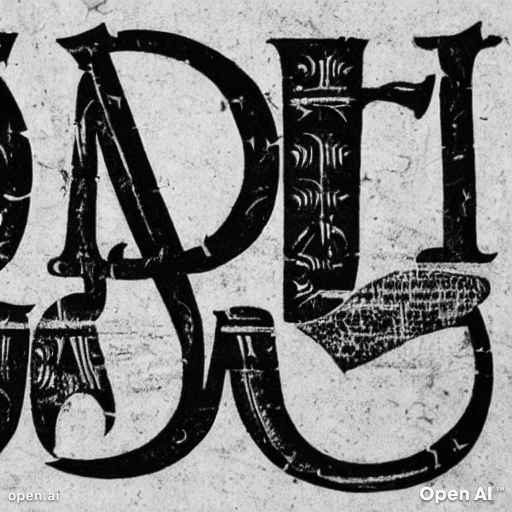
El Enigma del Tilde: Un Viaje por la Historia Lingüística
El tilde, esa curiosa ondulación que adorna ciertas letras en el español y otras lenguas, ha estado presente en nuestra escritura por siglos, dejando huellas indelebles en la historia lingüística. Este adorno tipográfico, que parece tener una vida propia, se ha convertido en un tema fascinante y digno de ser explorado a fondo.
La tilde, en su apariencia más común, es una pequeña línea curva que se sitúa sobre las vocales en ciertas palabras. Sin embargo, su pequeño tamaño no debería engañarnos, porque su influencia en el idioma es inmensa. El tilde tiene la capacidad de cambiar el significado de una palabra y su función en la oración, además de ser crucial en la pronunciación.
Un ejemplo de su importancia lo encontramos en las palabras "tú" y "tu". Aunque ambas palabras se pronuncian de la misma manera, su significado cambia drásticamente dependiendo de la presencia del tilde. "Tú" es un pronombre personal que se usa para referirse a la segunda persona, mientras que "tu" es un adjetivo posesivo.
En la historia del español, el uso del tilde ha sufrido varios cambios. En la antigüedad, se usaba principalmente para indicar la duración de las vocales. Con el tiempo, su uso evolucionó para marcar la acentuación y la separación de las sílabas. A medida que el español se desarrollaba y crecía como idioma, el uso del tilde se codificaba y se estandarizaba.
Además de su papel en la acentuación y la diferenciación de palabras, el tilde también juega un papel importante en la formación de ciertos signos de puntuación en español, como la tilde de la "ñ", una letra única en el alfabeto español. La "ñ" es el resultado de la evolución del doble "nn" en el español antiguo. La tilde sobre la "n" fue una forma abreviada de representar esta duplicación.
Explorar el enigma del tilde nos lleva a apreciar la complejidad y la belleza de la lengua española. Nos recuerda que cada elemento de nuestro lenguaje, por pequeño que sea, tiene su propio lugar en la rica tapestrya de la historia lingüística.
Por último, al igual que el umlaut en alemán, el tilde en español es más que un simple adorno tipográfico. Es un testamento de la historia del idioma, una guía para la pronunciación y un determinante del significado de las palabras. Cada tilde en cada palabra es un eco de las voces del pasado, un recuerdo de la evolución de nuestra lengua, y un homenaje a la capacidad humana para comunicarse de formas cada vez más sofisticadas y precisas.
En conclusión, el enigma del tilde, al igual que el misterio del umlaut, es un fascinante viaje a través de la historia lingüística. A medida que exploramos estos pequeños pero poderosos símbolos, nos damos cuenta de la inmensidad y profundidad del lenguaje humano. Cada tilde, cada umlaut, es una pequeña pieza del rompecabezas lingüístico que todos compartimos, un recordatorio de la increíble diversidad y riqueza de la comunicación humana.
✤ ✪ ✤ ✪ ✤ ✪ ✤ ✪ ✤ ✪ ✤ ✪ ✤ ✪ ✤ ✪ ✤ ✪ ✤
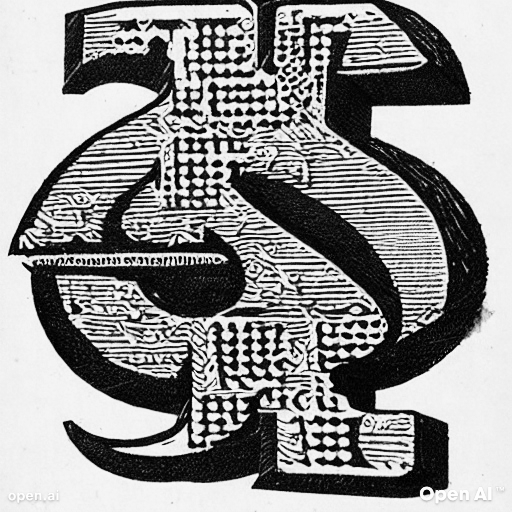
《点音符与波音符:不寻常的语言象征》
在研究汉字的过程中,我们发现它们中并没有点音符和波音符的存在。汉字的形态结构不同于很多拉丁字母系的文字,它更依赖于单字的形状与笔画,而非通过点音符和波音符来表达不同的发音。不过,通过这种对比,我们能更深入地理解语言的多样性以及各种文字的独特性。
在本书的开头,作者详细介绍了点音符(ü)的起源,用法和在德语、荷兰语等语言中的应用。在德语中,点音符ü可以改变字母的发音,赋予其一种特殊的元音音色。
接着,我们转向了西班牙语的波音符(ñ),它也是一种改变字母发音的标记。西班牙语中的“ñ”发出的是“ny”类似的音,像“canyon”中的“ny”。
然后,作者通过一个全面的历史视角,探讨了点音符和波音符在历史上的变迁以及它们对于语言学的重要性。此外,他们还研究了这两种符号在电脑编程和电子通讯中的作用,以及它们如何适应和影响了我们的数字时代。
在《疯狂的音标》和《数字世界的符号》这两章中,作者通过诗歌的形式,生动有趣地展示了这些语言符号的变化和应用。
然后,我们深入探讨了汉字中不存在点音符和波音符的原因,以及这对于中文语言表达的影响。汉字的形态结构更强调笔画和构字规则,而不是通过添加音标来改变发音。这种差异使得汉字具有了独特的表达力和美感。
在书的最后,作者以诗歌和散文的形式,呈现了一场对于语言的热情赞美。无论是点音符、波音符,还是汉字,都是人类语言的美丽证明,都值得我们去深入研究和理解。
总的来说,这本书是一部深入浅出,富有启发性的作品,它揭示了点音符和波音符的重要性,以及它们在我们日常生活和社会发展中的影响。通过对比分析,作者鼓励我们去欣赏和尊重语言的多样性,同时,也向我们展示了在数字时代,如何去更好地使用和理解这些符号。
✤ ✪ ✤ ✪ ✤ ✪ ✤ ✪ ✤ ✪ ✤ ✪ ✤ ✪ ✤ ✪ ✤ ✪ ✤
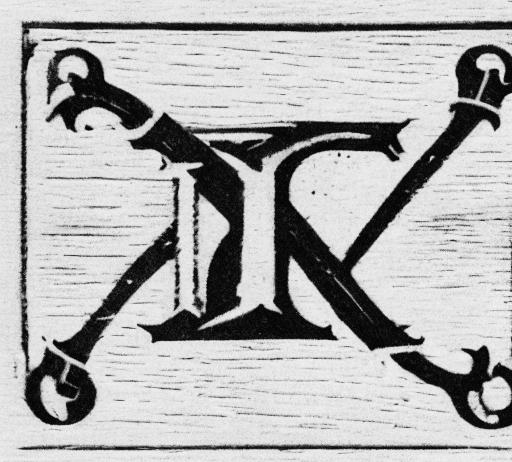
Dotted and Waved Notes: Unusual Symbols of Language
In the process of studying Chinese characters, we found that there are no dot and wave notes in them. The morphological structure of Chinese characters is different from that of many Latin alphabets. It relies more on the shape and strokes of individual characters, rather than expressing different pronunciations through punctuation and wave symbols. However, through this comparison, we can better understand the diversity of languages
and the uniqueness of various scripts.
At the beginning of the book, the author introduces the origin, usage and application of the dot (ü) in German, Dutch and other languages in detail. In German, the dot ü alters the sound of a letter, giving it a special vowel timbre.
Next, we turned to the Spanish diacritic (ñ), which is also a mark that changes the sound of a letter. The "ñ" in Spanish makes a sound similar to "ny," like the "ny" in "canyon."
Then, through a comprehensive historical perspective, the author explores the historical changes of dot and fret notes and their importance to linguistics. In addition, they examine the role of these two symbols in computer programming and electronic communication, and how they have adapted and influenced our digital age.
In the two chapters "Crazy Phonetic Symbols" and "Symbols of the Digital World", the author vividly and interestingly demonstrates the changes and applications of these language symbols in the form of poetry.
We then delved into the reasons for the absence of dot and wave symbols in Chinese characters, and how this affects Chinese language expression. The morphological structure of Chinese characters puts more emphasis on the rules of strokes and word formation, rather than changing the pronunciation by adding phonetic symbols. This difference makes Chinese characters have a unique expressive power and aesthetic feeling.
At the end of the book, the author presents a passionate praise of language in the form of poetry and prose. Whether it is dot notes, wave symbols, or Chinese characters, they are all beautiful proofs of human language, and they are all worthy of our in-depth study and understanding.
Overall, this book is a simple and enlightening work, which reveals the importance of dot and wave notes, and their influence in our daily life and social development. Through comparative analysis, the author encourages us to appreciate and respect the diversity of languages, and at the same time, shows us how to better use and understand these symbols in the digital age.
✤ ✪ ✤ ✪ ✤ ✪ ✤ ✪ ✤ ✪ ✤ ✪ ✤ ✪ ✤ ✪ ✤ ✪ ✤
Further Reading
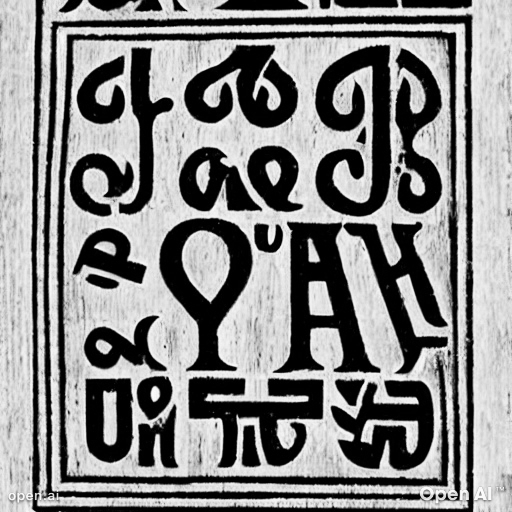
Fritinancy: Say Hi, Boo! - https://nancyfriedman.typepad.com/away_with_words/umlaut/page/2/
Yell Group from Britain, a name held in disdain, Rebranded to Hibu, an attempt to regain, Its presence online and shed its old skin, A move led by Landor, a battle to win.
Chosen for simplicity, an innovative sight, Hibu, they called it, pronounced "high-boo" just right. CEO Pocock says, with an edgy touch, The name means little, but it does mean so much.
In the world of branding, another tale unfurls, BüK, a new brand, into the market it hurls, Just like Füd and güd, it plays a fun trick, An umlaut for décor, a clever linguistic.
Artisan branding, a trend on the rise, Dunkin’ Donuts and Domino’s cleverly disguise, Their products with charm, a crafty allure, Starbucks and Panera Bread, the trend they ensure.
Brands with a twist, a provocative flirt, Names like Eggslut and Bookslut assert, Retail Slut too, a bold one to note, In the realm of branding, they proudly promote.
Umlauts continue, their reign unsurpassed, In Yogen Früz's branding, a contrast so vast. An umlaut for 'you', a marketing bliss, In the world of brands, it's the details we can't miss.
Britain's Yell Group, publisher of Yellow Pages, rebranded itself as Hibu in an attempt to shed its outdated image and increase its online presence. The rebranding effort was led by global branding company Landor. Despite the seemingly abstract nature of the new name, CEO Mike Pocock insists that Hibu, pronounced "high-boo", was chosen for its edginess, simplicity, and innovativeness. The company's rebranding strategy aims to connect communities, represented by the interconnectedness of the letters in the logo.
Moreover, the article mentions a new brand called BüK, which produces small booklets on various themes. Similar to other brands using umlauts like Füd and güd, BüK uses the umlaut simply as a decorative element.
It also highlights the increased use of the term "artisan" in branding, as companies like Dunkin’ Donuts, Domino’s, Starbucks, and Panera Bread use it to promote their products.
Additionally, the article talks about the trend of using provocative terms in branding, citing examples like Eggslut, Bookslut, and Retail Slut.
Lastly, the umlaut trend continues with Yogen Früz, a global frozen yogurt brand, where the umlaut stands for 'you' and is consistently highlighted in a contrasting color.
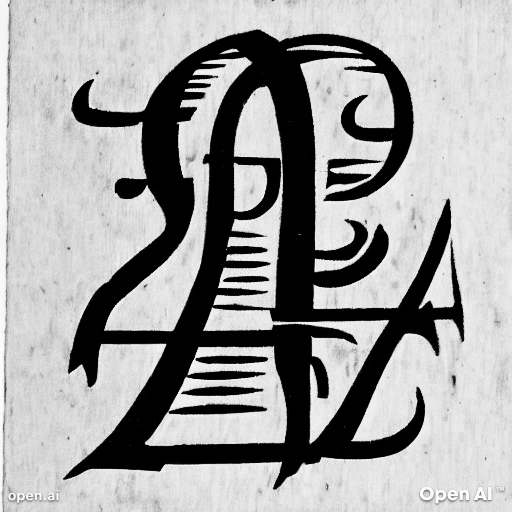
The Ündeniable Ümlaut - https://www.visualthesaurus.com/cm/candlepwr/the-undeniable-umlaut/
In English brands, a trend takes flight, With umlauts adorning logos left and right. Though in English language they're not found, In brand names, they're quite renowned.
This tale starts with a rock band's fame, Blue Öyster Cult was its name. Motörhead and Mötley Crüe joined the game, Adding umlauts for a menacing frame.
Then Häagen-Dazs took a different route, Craftsmanship and tradition, their umlaut did tout. In frozen dairy, this trend did sprout, Freshëns, Yogen Früz, without a doubt.
Smiling logos, a clever ploy, The umlauted 'U', a joyful toy. Füd, Güd, and others deploy, A smiley face they enjoy.
Söfft, Seäsonal add a European hint, Their brand names given an umlaut tint. But inconsistency is a frequent lament, In web addresses, the umlaut's absent.
While umlauts gain the popular vote, Other accents in brand names also float. Børn Shoes has a slashed 'o' of note, Yet 'born' is how it's often wrote.
Uber, a brand with German flair, Chose Anglicized orthography, fair and square. With umlauts rampant everywhere, Uber's choice seems quite rare.
The usage of the umlaut (the double dot accent) in English brand names has seen a steady rise, despite the accent being foreign to the English language. This trend seems to have begun with the rock band Blue Öyster Cult in 1970, later followed by Motörhead in 1975, and Mötley Crüe in 1980. In these cases, the umlaut was used to add a Teutonic and menacing feel to the brand. The ice-cream brand Häagen-Dazs, however, utilized the umlaut to convey an "old-world traditions and craftsmanship" vibe.
The umlaut soon found popularity in the frozen-dairy market, evident in brands like Freshëns and Yogen Früz. The umlauted 'U' often serves as a smiley face in logos, utilized by brands like Füd and Güd. Some brands, like Söfft and Seäsonal, use the umlaut to hint at "European design" or origin. However, these diacritical marks can cause inconsistency in branding, as they are often not reproduced in newspaper stories or web addresses.
Even though umlauts are the most popular choice for orthographic variation, other accent marks like the slashed vowel in Børn Shoes are also utilized. Interestingly, brands like Uber, with a legitimate claim to the umlaut, choose to refrain from using it, opting for Anglicized orthography instead.
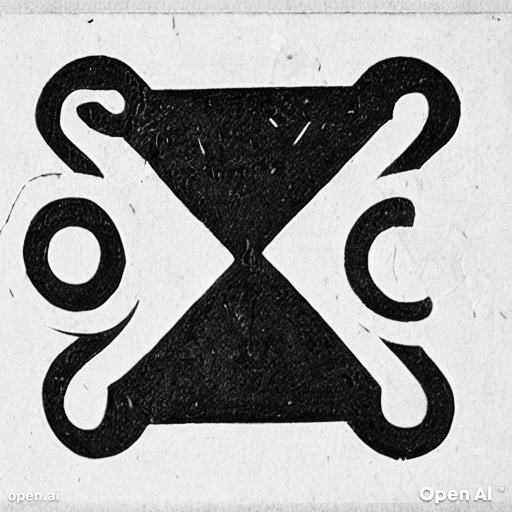
Why umlauts are a big deal in branding https://www.yuqo.com/why-the-umlaut-is-a-big-deal/
In the sphere of branding, there's a trend, An umlaut on a vowel, a message to send. Blue Öyster Cult, YogaMöm, Häagen-Dazs are they, Brands that with umlauts have found their way.
A linguistic tool from the Germanic root, Changes the vowel sound, it’s quite astute. Yet in branding, it's taken a novel turn, An allure of Europe, many yearn to earn.
For rock bands of the 70s, nostalgia was key, An umlaut conveyed Gothic mystery. While Häagen-Dazs, with their ice cream delight, Used it for quality, and European insight.
But be forewarned, it's not all pure gain, There's complexity and risk, potential pain. It might make search tough, create inconsistency, A decision to make, with great persistency.
But if it aids your brand, lends it grace, Then an umlaut might have a solid case. Just remember to be clear, in your brand intention, For with purposeful design, comes customer retention.
The article, titled "Why umlauts are a big deal in branding", explores the fascinating history and use of umlauts in branding. Originating in Germanic languages, umlauts, depicted as two dots above a vowel, alter the pronunciation of a vowel to sound more like the following vowel or semivowel. Notably, the umlaut's appeal is not limited to linguistics, but has been widely employed in the branding world.
The article illustrates how various popular brands, such as Blue Öyster Cult, YogaMöm, and Häagen-Dazs, incorporate the umlaut as part of their brand identity. They use the umlaut to convey certain images or evoke particular feelings in their audience. For instance, rock bands in the 70s, like Blue Öyster Cult, used the umlaut to present a sense of morbid nostalgia and European Gothic mystique. On the other hand, Häagen-Dazs used the umlaut to convey associations with European quality, craftsmanship, and excellence.
The umlaut, however, comes with pros and cons in branding. On the upside, it lends a sense of continental Europe to a brand, which can be beneficial depending on the image the brand seeks to portray. However, the downside includes added complexity to the brand strategy, making the brand harder to search online and causing potential inconsistency across media appearances.
The article concludes by suggesting that if the umlaut contributes a net gain to your branding and resonates with the brand's desired image, it could serve as an effective branding tool. It emphasizes the importance of clear intentions in branding and understanding how different elements, including the umlaut, influence a brand's image.
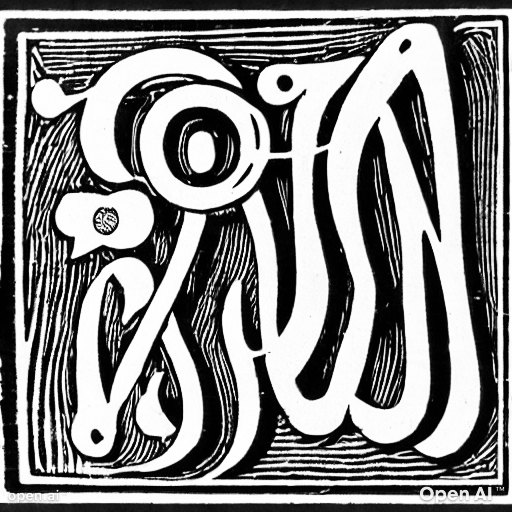
Diacritics in General https://en.wikipedia.org/wiki/Diacritic
Diacritics, an interesting find, In scripts of different kinds, They're glyphs added to a letter, To make pronunciation better.
Derived from Greek of old, Their purpose and role, To change how letters are heard, Through distinct symbols conferred.
In English, their use is rare, Except in borrowed words with flair, From French, their spelling preserved, Through diacritics served.
In languages far and wide, Diacritics take a ride, Marking vowels, distinguishing sounds, In texts from different grounds.
With marks like accents, dots, and rings, Each diacritic its uniqueness brings, Not always next to letters they stand, In some languages, they command the entire band.
The tittle on "i" and "j" we see, Began as a diacritic, a decree, To separate "i" from its peers, A usage that over years, endears.
From East to West, the story unfolds, Where diacritics are bought and sold, Europe likes them on vowels, not to hide, But English, it takes a different stride.
A diacritic is a glyph added to a letter or a basic glyph to differentiate or clarify pronunciation. The term originates from Ancient Greek, with "diacritic" functioning as a noun and "diacritical" as an adjective. In the Latin script, diacritics change the sound-values of the letters to which they are added. In English, for instance, the diaeresis diacritic has been used historically to indicate the correct pronunciation of ambiguous words like "coöperate".
While English occasionally uses diacritics, they are not in common use. Most words with diacritics in English are borrowed from other languages such as French (e.g., naïve, Noël, café, crêpe, and façade). Other languages use diacritics more extensively to distinguish homonyms or mark absence of vowels, among other uses.
In terms of orthography and collation, a letter modified by a diacritic may be considered a new letter or a combination of letter and diacritic. The treatment varies from language to language and can even differ within a language. Additionally, there are "in-line diacritics", which modify the sound of the preceding letter, like the "h" in English "sh" and "th".
Diacritics come in various forms: accents, dots, curves, strokes, rings, overlays, etc. Not all diacritics are placed adjacent to the letters they modify. For instance, in the Wali language of Ghana, an apostrophe indicates a change of vowel quality and occurs at the beginning of the word. The diacritic, therefore, applies to the entire word due to vowel harmony.
Finally, the tittle on the letter "i" or "j" of the Latin alphabet originated as a diacritic to clearly distinguish "i" from adjacent letters. Several languages of eastern Europe use diacritics on both consonants and vowels, in contrast to western Europe where digraphs are more frequently used to change consonant sounds. Most languages in Europe use diacritics on vowels, with English being a notable exception.
❦ ~ Finis ~ ❦
_BW.jpg)
✤ ✪ ✤ ✪ ✤ ✪ ✤ ✪ ✤ ✪ ✤ ✪ ✤ ✪ ✤ ✪ ✤ ✪ ✤

Daily Eagle News http://dailyeagle.news Established July 4, 2019